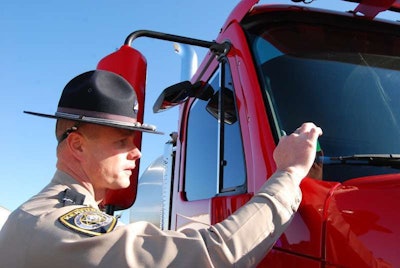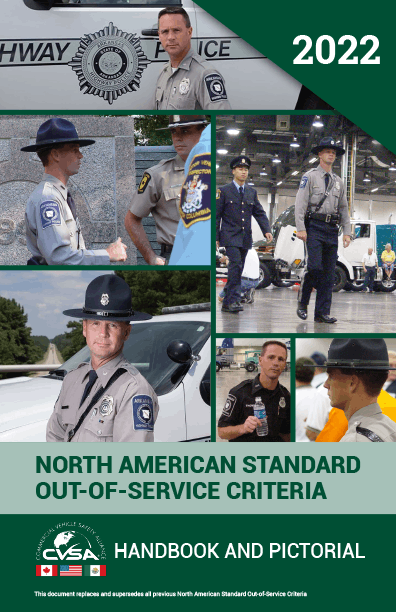
The Commercial Vehicle Safety Alliance has announced this year’s International Roadcheck inspection blitz will be held May 17-19 with a focus on wheel ends.
During the 72-hour inspection initiative, commercial motor vehicle inspectors in Canada, Mexico and the U.S. will conduct North American Standard Inspections of trucks, buses and drivers at weigh and inspection stations, on roving patrols, and at temporary inspection sites.
Each year, CVSA focuses on a specific aspect of a roadside inspection. This year, the focus will be on wheel ends. CVSA says violations involving wheel end components historically account for about one quarter of the vehicle out-of-service violations discovered during International Roadcheck, and past Roadcheck data routinely identified wheel end components, excluding brakes, as a top 10 vehicle violation.
During International Roadcheck, commercial motor vehicle inspectors examine trucks and buses and the driver’s documentation and credentials using CVSA’s North American Standard Inspection Program procedures, which are the uniform inspection steps, processes and standards established to ensure consistency in compliance, inspections and enforcement. Using the North American Standard Out-of-Service Criteria, also established by CVSA, inspectors identify critical violations that, if found, require the inspector to restrict the driver or vehicle from travel until those violations or conditions are addressed.

[Related: Inside the 20% rule for our-of-service brake adjustment violations -- and how to prevent]
 CVSA offers different formats of the new out-of-service criteria, including both a spiral-bound, hard-copy handbook and an electronic pdf of the same in English, Spanish and French Canadian versions. Coming soon, the alliance said, would be updates to its smartphone app version of the criteria. Find various options for purchase via this link.
CVSA offers different formats of the new out-of-service criteria, including both a spiral-bound, hard-copy handbook and an electronic pdf of the same in English, Spanish and French Canadian versions. Coming soon, the alliance said, would be updates to its smartphone app version of the criteria. Find various options for purchase via this link.
As in past years, CVSA released a briefing document you can download via this link spelling out what exactly was changed for this year in a book that, while updated, largely remains intact year to year.
Trucking-applicable updates include more clarity around chafed air hoses that qualify for out of service treatment. The issue was addressed with the Society of Automotive Engineers, CVSA said, and brake manufacturers to ultimately determine that when the "reinforcement ply layer is frayed, the hose should be placed OOS based on the degradation of the integrity of the hose and the danger of it failing."
Various other brake-related clarifications were made, and a particular OOS lighting condition's language was updated to combat the situation of some inspectors "using this section incorrectly and applying it to electric brakes as well," CVSA said. For further clarity CVSA updated the particular section to reinforce lighting-only application of the criteria.
During Roadcheck, trucks that successfully pass a North American Standard Level I or Level V Inspection without any critical vehicle inspection item violations may receive a CVSA decal. In general, the intent of the decal is to help inspectors prioritize equipment they are inspecting. CVSA said most inspectors won't re-inspect a decaled truck or trailer during the three months while the decal is valid.
“We want every vehicle on our roadways to be in proper working order for the safety of the driver operating that vehicle and everyone traveling on our roadways,” said CVSA President Capt. John Broers with the South Dakota Highway Patrol.
[Related: An assist for avoiding brake adjustment violations]












